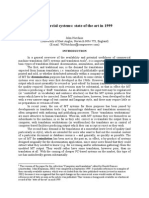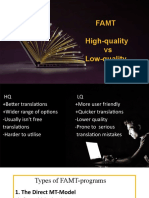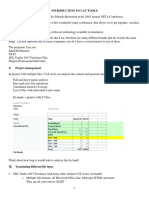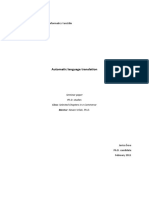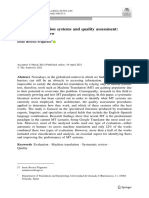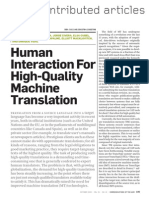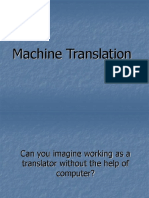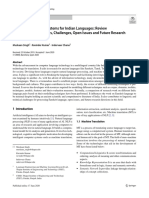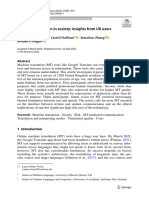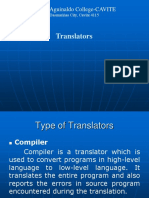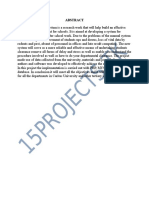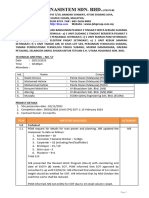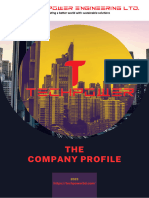0% found this document useful (0 votes)
33 views13 pagesBricks and Skeletons Some Ideas For The
This document discusses potential improvements to machine translation (MT) and machine-aided human translation (MAHT) tools. It proposes closer integration of terminology and translation memory databases by:
1) Splitting sentences in translation memories into larger "bricks" of text for partial matches.
2) Replacing known terms in sentences with variable placeholders to create generalized "sentence skeletons" that could apply to multiple sentences.
This latter idea is viewed as the most promising for future implementations, though no experiments have been done yet to validate the ideas. The goal is to develop simple, robust tools that maximize machine assistance while preserving the human translator's role.
Uploaded by
bakir benhabilesCopyright
© © All Rights Reserved
We take content rights seriously. If you suspect this is your content, claim it here.
Available Formats
Download as PDF, TXT or read online on Scribd
0% found this document useful (0 votes)
33 views13 pagesBricks and Skeletons Some Ideas For The
This document discusses potential improvements to machine translation (MT) and machine-aided human translation (MAHT) tools. It proposes closer integration of terminology and translation memory databases by:
1) Splitting sentences in translation memories into larger "bricks" of text for partial matches.
2) Replacing known terms in sentences with variable placeholders to create generalized "sentence skeletons" that could apply to multiple sentences.
This latter idea is viewed as the most promising for future implementations, though no experiments have been done yet to validate the ideas. The goal is to develop simple, robust tools that maximize machine assistance while preserving the human translator's role.
Uploaded by
bakir benhabilesCopyright
© © All Rights Reserved
We take content rights seriously. If you suspect this is your content, claim it here.
Available Formats
Download as PDF, TXT or read online on Scribd
/ 13





